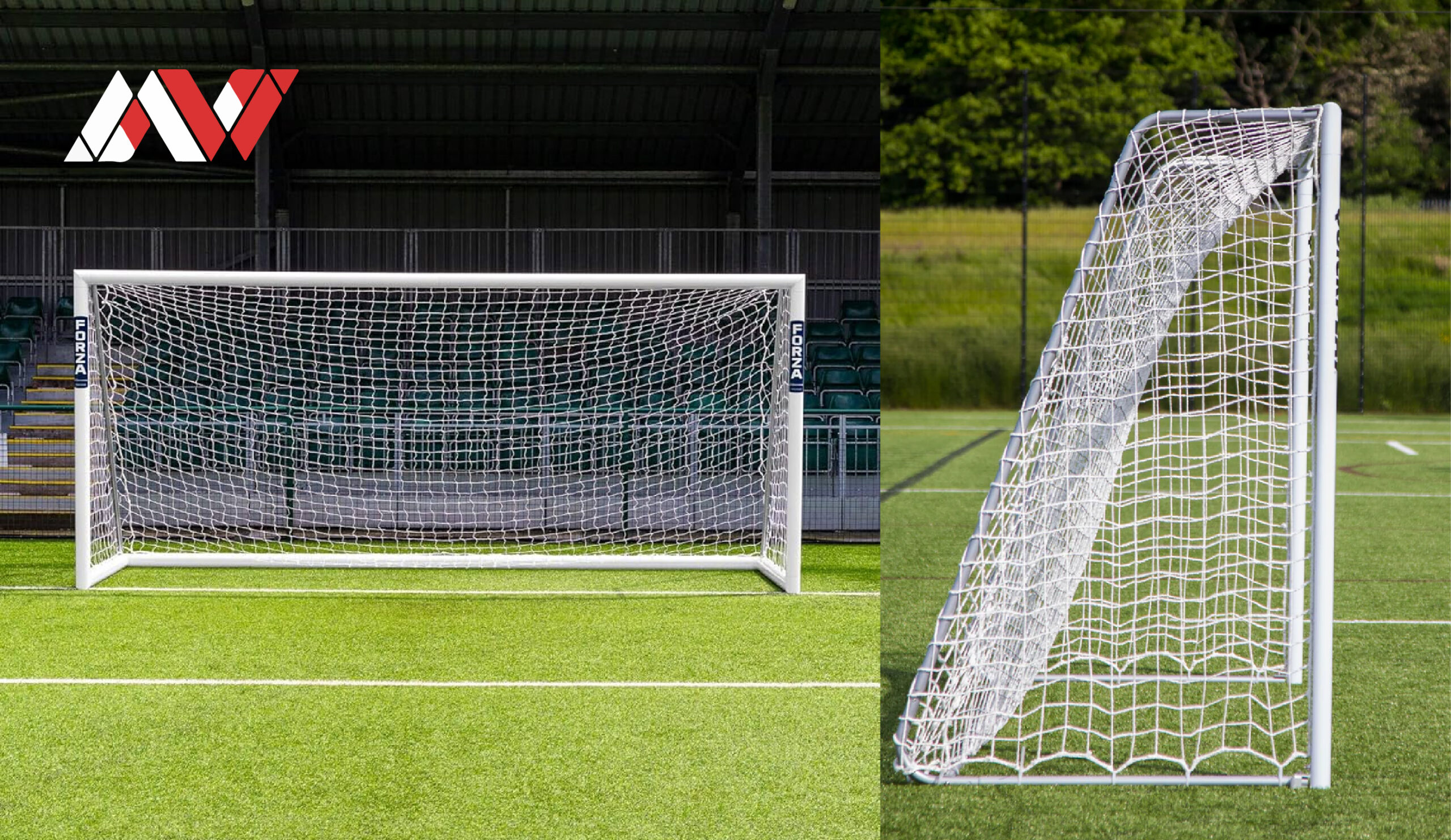Soccer goals are the heartbeat of the beautiful game, the culmination of skill, strategy, and sometimes, a bit of luck. Goals are what fans wait for, players aim for, and teams strategize around. While all goals have the same result putting the ball into the back of the net the methods, skills, and moments that lead to these goals can vary dramatically. This article explores the art and science behind scoring in soccer, diving into different types of goals, iconic goals in history, the evolution of goal-scoring techniques, and the factors that contribute to a successful strike.
Types of Soccer Goals
The Power Shot
One of the most exciting types of goals to witness is the powerful long-range shot. A power shot usually involves a player striking the ball from outside the penalty area with incredible force. These types of goals require strength, accuracy, and often an element of surprise, as the goalkeeper has less time to react to a fast-traveling ball. Power shots showcase a player’s technical skills and physical power, and they are often attempted by players with a strong foot, such as Roberto Carlos and Cristiano Ronaldo.
The Chip or Lob
The chip, or lob goal, is a technique used when the player spots the goalkeeper off the goal line. With a precise touch, the player lifts the ball over the keeper’s head into the net. This type of goal requires finesse, accuracy, and an excellent sense of timing. Famous chip goals, such as Lionel Messi’s many delicate lobs, demonstrate both vision and confidence. The chip is often used by creative, agile players who are skilled at reading the game and exploiting the smallest openings.
The Header
Scoring a goal with a header requires perfect timing, strength, and positioning. Headers are often seen in situations where the ball is crossed into the penalty area from a corner or a free kick. The player uses their head to direct the ball toward the goal, aiming to catch the goalkeeper off guard. Heading goals are often scored by tall, physically dominant players such as Cristiano Ronaldo and Zlatan Ibrahimović, who are known for their aerial prowess and timing.
The Bicycle Kick
One of the most visually stunning and challenging goals to score is the bicycle kick. This acrobatic move involves a player launching themselves into the air, kicking the ball backward over their head toward the goal. The bicycle kick requires precise timing, coordination, and agility. Some of the most memorable goals in soccer history, like Zlatan Ibrahimović’s legendary overhead kick against England in 2012, are bicycle kicks that leave spectators in awe. While risky, a successful bicycle kick is often celebrated as one of the game’s ultimate skills.
The Tap-In
A tap-in may not be as glamorous as a power shot or a bicycle kick, but it is a crucial skill in soccer. Tap-in goals are scored from close range, often following a cross or a rebound, and require a player to be in the right place at the right time. Great strikers like Sergio Agüero and Raúl González have mastered the art of positioning to be ready for these simple yet essential opportunities. Tap-ins showcase a player’s awareness, positioning, and composure, proving that sometimes, a straightforward goal can be just as vital as a flashy one.
Iconic Soccer Goals in History
Diego Maradona’s “Hand of God” and “Goal of the Century” (1986)
Diego Maradona’s two goals against England in the 1986 World Cup remain two of the most talked-about moments in soccer history. The first, known as the “Hand of God,” was a controversial goal where Maradona used his hand to push the ball into the net. Moments later, he scored what would later be dubbed the “Goal of the Century,” weaving his way through five English defenders before slotting the ball past the goalkeeper. These goals highlight both the controversy and beauty that goals can bring to the game.
Zinedine Zidane’s Volley in the 2002 UEFA Champions League Final
Another unforgettable goal came from French legend Zinedine Zidane in the 2002 UEFA Champions League final, where he scored a left-footed volley from outside the box. The goal showcased Zidane’s exceptional technique and composure under pressure, leading Real Madrid to victory. Zidane’s volley is often regarded as one of the greatest goals in Champions League history due to its sheer skill and the importance of the moment.
David Beckham’s Halfway Line Goal (1996)
David Beckham’s incredible goal from the halfway line in 1996 against Wimbledon marked his arrival on the world stage. Spotting the goalkeeper off his line, Beckham struck the ball from the center of the pitch, sending it sailing over the goalkeeper and into the net. This goal exemplified creativity, vision, and impeccable technique, and it remains one of the most iconic goals in English soccer.
Evolution of Goal-Scoring Techniques
The Role of Technology
Advances in technology have changed how goals are scored, trained for, and analyzed. For example, precision training tools and sports science data help players hone their shooting accuracy, ball control, and positioning. Goal-line technology and Video Assistant Referee (VAR) ensure that goals are fairly awarded, reducing controversies over whether the ball crossed the line or was scored fairly.
Improved Physical Conditioning
Modern players are stronger, faster, and more agile than their predecessors, allowing them to attempt and execute more challenging goal-scoring techniques. Improved fitness regimes mean players have better endurance and can maintain high levels of performance throughout the game, which has led to an increase in late-game goals and a rise in the intensity of attacking plays.
Tactical Evolution and the Rise of High-Pressing
Teams have also evolved tactically to create more goal-scoring opportunities. The popularization of high-pressing tactics, where players aggressively press their opponents to win the ball back in advanced positions, has resulted in more chances for strikers to score. This strategy requires players to be quick and precise, capitalizing on defensive mistakes to create and convert goal-scoring chances.
Factors That Influence a Goal’s Success
Positioning and Awareness
One of the most critical factors in scoring is positioning. Players who have a keen sense of positioning are often in the right place at the right time, ready to capitalize on scoring opportunities. Awareness of other players’ movements, spaces left by defenders, and the position of the goalkeeper can help attackers make split-second decisions that lead to goals.
Timing and Anticipation
Anticipation and timing are crucial in soccer, especially for headers and volleys. A mistimed jump or poorly anticipated pass can result in a missed opportunity. Strikers and midfielders must learn to read the game, timing their runs and strikes to perfection. Timing is especially important for poachers who rely on finding gaps in the defense to score quick goals.
Skill and Technique
No goal can be scored without technique. For instance, a power shot requires a well-placed strike with the laces, while a chip requires a gentle touch with the front of the foot. Players must practice different techniques to build a varied skill set, allowing them to adapt to various goal-scoring opportunities that arise during a match.
The Psychological Impact of a Goal
A goal is more than just a score on the board; it can shift the momentum of a game, uplift a team’s morale, and demoralize the opponent. A well-timed goal can rejuvenate a struggling team or solidify the confidence of a team already in control. This psychological aspect is why goal-scoring is so revered in soccer; each goal holds the power to change the course of the game.
Conclusion
Scoring a goal in soccer is an art form, combining skill, timing, and sometimes a bit of magic. From legendary long-range shots to elegant chips and thrilling bicycle kicks, soccer goals represent the peak of athletic achievement in the game. The evolution of techniques, the influence of iconic goals, and the intense preparation behind every strike highlight the complexity and beauty of scoring. For players and fans alike, goals are the heart and soul of soccer, creating unforgettable moments that live on in the sport’s rich history. Whether it’s a simple tap-in or a jaw-dropping volley, every goal brings its own story, leaving a lasting impact on the beautiful game.
Read more: Morgan Riddle Nude: Breaking Down the Myths and Celebrating Her Influence




